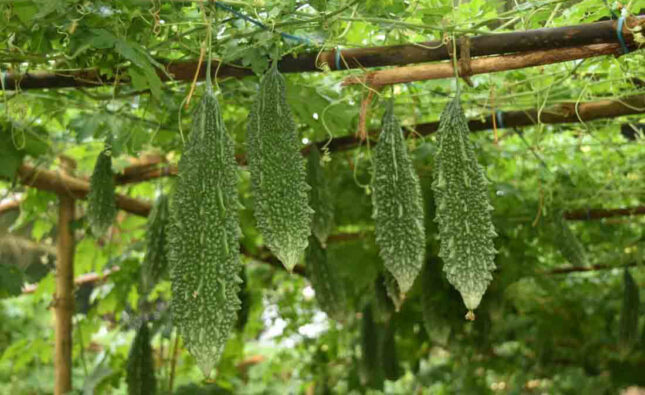Profitable Business of Marigold Marigold, A Complete Guide
Marigold is a common name for plants belonging to the Tagetes genus, which is part of the Asteraceae family. Marigolds are flowering plants that are known for their vibrant and colorful flowers. They are native to North and South America but have been cultivated and naturalized in many other parts of the world. Marigolds are popular garden plants and are often grown for their decorative value. They come in various sizes, ranging from small, compact varieties to taller, bushier ones. The flowers can be yellow, orange, or a combination of both, and they have a distinct scent. These flowers are valued for their hardiness and ability to thrive in different climates. They are often used as bedding plants in gardens, borders, and containers. Marigolds are also commonly planted in vegetable gardens as companion plants to help deter pests, such as aphids and nematodes, due to their natural insect-repellent properties.
Apart from their ornamental uses, marigolds have been used in traditional medicine and herbal remedies. They contain compounds with antimicrobial, anti-inflammatory, and antioxidant properties. Marigold extracts and essential oils have been utilized in various forms, including creams, ointments, and teas, for treating skin conditions, minor wounds, and inflammation. In some cultures, marigolds hold cultural and symbolic significance. For example, in Mexican culture, marigolds, specifically the Tagetes erecta variety known as “cempasúchil” or “Mexican marigold,” are associated with the Day of the Dead (Día de los Muertos) celebrations. They are used to create vibrant floral arrangements and placed on altars to honor deceased loved ones. Overall, marigolds are versatile plants that combine beauty with practicality, making them a popular choice for gardeners and herbal enthusiasts alike.
Cultivation Of Marigold
Marigold (Tagetes) is a popular flowering plant cultivated for its vibrant and colorful blooms. It is relatively easy to grow and is widely used in gardens, borders, containers, and as cut flowers. Here are some guidelines for the cultivation of marigold:
-
Variety Selection:
- Choose a marigold variety based on your preferences, such as height, flower color, and bloom size.
- Common marigold varieties include French marigold (Tagetes patula), African marigold (Tagetes erecta), and signet marigold (Tagetes tenuifolia).
-
Soil Preparation:
- Marigolds thrive in well-drained soil with a pH range of 6.0 to 7.5.
- Prepare the soil by removing weeds, rocks, and debris.
- Incorporate organic matter, such as compost or well-rotted manure, to improve soil fertility and structure.
-
Planting:
- Marigolds can be grown from seeds or transplants.
- If starting from seeds, sow them indoors 4 to 6 weeks before the last frost date or directly in the garden after the danger of frost has passed.
- Plant seeds at a depth of about 1/4 inch (6 mm) and maintain a spacing of 6 to 12 inches (15 to 30 cm) between plants, depending on the variety.
- Transplant seedlings when they have developed their first true leaves, ensuring that the soil is well-prepared and the plants are adequately spaced.
-
Sunlight and Temperature:
- Marigolds require full sun for optimal growth and flowering, with at least 6 to 8 hours of direct sunlight per day.
- They are warm-season plants and thrive in temperatures between 70°F and 85°F (21°C to 29°C).
-
Watering:
- Water marigolds regularly to keep the soil evenly moist but not waterlogged.
- Avoid overhead watering, as wet foliage can increase the risk of diseases.
- Water at the base of the plants to prevent fungal issues and promote healthy root development.
-
Mulching and Weed Control:
- Apply a layer of organic mulch, such as straw or wood chips, around the plants to conserve soil moisture and suppress weed growth.
- Regularly remove any weeds that compete with marigolds for nutrients and water.
-
Fertilization:
- Marigolds are generally low-maintenance plants and do not require heavy fertilization.
- Prior to planting, incorporate a balanced, slow-release fertilizer into the soil according to package instructions.
- Avoid excessive nitrogen fertilization, as it can promote foliage growth at the expense of flower production.
-
Deadheading and Pruning:
- Remove faded or spent flowers regularly through deadheading.
- Pinch or prune back leggy or overly tall stems to promote bushier growth and more compact plants.
-
Pest and Disease Management:
- Marigolds are relatively resistant to pests and diseases. However, some common issues include aphids, spider mites, and fungal diseases like powdery mildew.
- Monitor the plants regularly for signs of pests or diseases and take appropriate measures, such as insecticidal soap or organic pesticides, if necessary.
-
Harvesting:
- Marigold flowers can be harvested when they are fully open and at their peak color.
- Cut the flowers in the morning or evening when the temperature is cooler.
- Remove any foliage that may come in contact with the water in the vase to prolong the vase life. By following these cultivation guidelines, you can enjoy a beautiful display of marigold flowers throughout the growing season.

Varieties Of Marigold
There are several different varieties of marigolds, each with its own unique characteristics. Here are some of the most common types:
-
African Marigold (Tagetes erecta):
Also known as American marigold, these are tall, robust plants with large, pom-pom-like flowers. They can reach heights of up to 3 feet (1 meter) and produce flowers in shades of yellow, orange, and sometimes red.
-
French Marigold (Tagetes patula):
French marigolds are smaller and more compact compared to African marigolds. They usually grow to a height of around 6 to 18 inches (15 to 45 cm). The flowers are smaller in size but come in a wider range of colors, including yellow, orange, red, and bicolor combinations.
-
Signet Marigold (Tagetes tenuifolia):
Signet marigolds are known for their fine, feathery foliage and small, dainty flowers. They are typically more compact and mound-shaped compared to other marigold varieties. The flowers come in shades of yellow and gold and have a pleasant citrus-like scent.
- Triploid Marigold (Tagetes erecta x Tagetes patula): Triploid marigolds are a hybrid cross between African and French marigolds. They exhibit characteristics of both parent species, resulting in plants that are more compact than African marigolds but taller than French marigolds. They come in various colors and are often chosen for their large, showy flowers.
-
Mexican Marigold (Tagetes lucida):
Also known as Mexican tarragon or Mexican mint marigold, this variety is valued for its culinary uses. It has narrow, elongated leaves with a strong anise or licorice fragrance. The bright yellow or orange flowers are smaller compared to other marigold varieties. These are just a few examples of the many marigold varieties available. Each variety has its own growth habits, flower sizes, colors, and scent profiles, allowing gardeners to choose the type that best suits their preferences and gardening needs.
Importance Of Marigold
Marigolds hold significant importance in various aspects, including gardening, pest control, cultural and religious traditions, and herbal medicine. Here are some key points highlighting the importance of marigolds:
-
Garden Ornamentation:
Marigolds are widely valued for their vibrant and colorful flowers, making them popular choices for garden beds, borders, and containers. They add beauty and visual appeal to outdoor spaces, enhancing the aesthetics of gardens and landscapes.
2. Pest Control:
Marigolds have natural insect-repellent properties, particularly French marigolds (Tagetes patula) and certain cultivars of African marigolds (Tagetes erecta). They release a scent from their foliage that repels many pests, including aphids, whiteflies, and nematodes. Planting marigolds in vegetable gardens can help deter these pests and protect neighboring plants.
3. Companion Planting:
Marigolds are often utilized as companion plants to benefit nearby crops. Their strong scent and pest-repellent properties make them useful for intercropping with vegetables and herbs, acting as a natural pest control measure. Additionally, marigolds attract beneficial insects such as ladybugs and lacewings, which prey on common garden pests.
4. Cultural and Religious Significance:
Marigolds hold cultural and religious significance in various traditions around the world. For example, in Mexican culture, marigolds, specifically the Tagetes erecta variety known as “cempasúchil” or “Mexican marigold,” are associated with the Day of the Dead (Día de los Muertos) celebrations. They are used to decorate altars and gravesites to honor deceased loved ones.
5. Herbal Remedies:
Marigolds have been used in traditional medicine and herbal remedies for their medicinal properties. The flowers contain compounds with antimicrobial, anti-inflammatory, and antioxidant effects. Marigold extracts and essential oils have been utilized in topical applications such as creams, ointments, and salves for treating various skin conditions, minor wounds, and inflammation.
6. Environmental Benefits:
Marigolds attract pollinators like bees and butterflies, contributing to biodiversity and supporting overall ecosystem health. By providing a food source for these beneficial insects, marigolds play a role in pollination and can help support other plant species in the surrounding environment. These are some of the significant aspects that highlight the importance of marigolds. Their versatility as garden plants, pest control properties, cultural symbolism, medicinal uses, and ecological contributions make them valuable in various contexts.

Sales & Export of Marigold
Sales and export of marigold can be a profitable business opportunity, especially if you have access to quality marigold products and a reliable supply chain. Here are some key considerations for sales and export of marigold:
-
Market research:
Conduct thorough market research to identify potential export markets for marigold products. Look for countries or regions with a demand for marigolds, either for ornamental purposes or for herbal and medicinal uses. Consider factors such as market size, competition, regulatory requirements, and cultural preferences.
2. Quality assurance:
Ensure that your marigold products meet high quality standards to gain a competitive edge in the export market. Implement strict quality control measures at every stage, from cultivation and harvesting to processing and packaging. Adhering to international quality standards will help build trust and credibility with buyers.
3. Regulatory compliance:
Familiarize yourself with the export regulations and requirements of the target markets you intend to enter. This includes understanding phytosanitary regulations, labeling requirements, import permits, and any other relevant documentation needed for export. Compliance with these regulations is crucial for smooth export operations.
4. Supply chain management:
Establish a reliable and efficient supply chain to ensure a steady flow of fresh marigold products. This involves coordinating with farmers or growers, implementing proper post-harvest handling and storage practices, and partnering with transportation and logistics providers experienced in handling perishable goods for export.
5. Market entry strategies:
Identify the most effective market entry strategies for your marigold products. This can include direct sales to importers, distributors, or retailers in the target markets, or working with local agents or brokers who have existing networks and market knowledge. Attend international trade shows, exhibitions, and business-to-business meetings to connect with potential buyers and establish business relationships.
6. Pricing and negotiation:
Determine competitive pricing for your marigold products, taking into account factors such as production costs, transportation expenses, market demand, and competitors’ prices. Be prepared for negotiation with buyers, considering volume discounts, long-term contracts, or value-added services to secure favorable deals.
7. Packaging and labeling:
Pay attention to the packaging and labeling requirements of the target markets. Ensure that your marigold products are appropriately packaged to maintain freshness and quality during transportation. Labeling should comply with local regulations and include necessary product information, such as origin, variety, and any certifications or quality seals.
8. Marketing and promotion:
Develop a targeted marketing and promotion strategy to raise awareness of your marigold products in the export markets. This can involve digital marketing, participation in international trade fairs, advertising in relevant industry publications, and leveraging social media platforms to reach potential buyers and distributors.
9. Documentation and logistics:
Familiarize yourself with the export documentation and logistics processes specific to marigold exports. This includes preparing commercial invoices, certificates of origin, phytosanitary certificates, shipping documentation, and arranging for transportation, customs clearance, and insurance.
10. Relationship management:
Cultivate strong relationships with your buyers and maintain open lines of communication. Provide excellent customer service, respond promptly to inquiries, and address any concerns or issues that may arise. Building long-term relationships based on trust and reliability can lead to repeat business and referrals. It’s important to note that export regulations, market dynamics, and customer preferences may vary across different countries and regions. Stay updated on market trends and adapt your export strategy accordingly to maximize sales opportunities for your marigold products.






